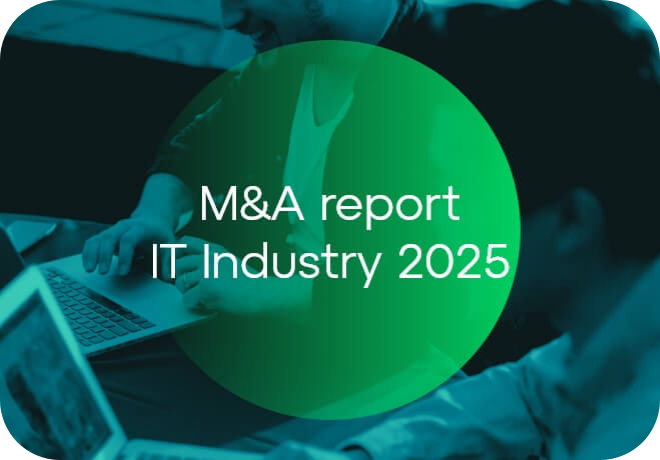The following glossary covers key terms in the field of mergers and acquisitions (M&A), capital markets, and investment financing. It is intended for individuals involved in transaction processes: investors, advisors, lawyers, and company management.
Due Diligence
Due diligence is a comprehensive analysis of a company prior to its acquisition, investment, or merger. It includes the assessment of financial, legal, commercial, and tax conditions to identify risks and opportunities before finalizing a transaction. It is a crucial stage of every M&A process.
Vendor Due Diligence (VDD)
Due diligence initiated by the seller. It involves preparing reports and data about the company’s situation (financial, operational, legal), which are shared with potential buyers. It shortens the transaction time and increases transparency.
Virtual Data Room (VDR)
A cloud-based data repository providing secure access to confidential documents during transaction processes. VDR supports due diligence, communication between parties, and document management. FORDATA VDR is a market leader in Central and Eastern Europe.
Business Acquisition
The process of gaining control over a company by acquiring a controlling stake in its shares or equity. It may involve the entire business or part of it. The goal of an acquisition is usually strategic, financial, or operational benefits.
Merger
The combination of two or more business entities into a single new entity or the absorption of one company by another. Mergers can be horizontal, vertical, or conglomerate in nature.
Restructuring
The process of making significant changes to a company’s organization, structure, finances, or operations in order to improve its efficiency, profitability, or to prepare it for sale or merger.
Post-Merger Integration (PMI)
The phase following the closing of a transaction, during which the merging companies integrate structures, teams, systems, processes, and organizational cultures.
Syndicated Loan
A form of financing for capital-intensive projects, where several banks jointly provide a single loan. It allows risk-sharing and access to larger amounts of funding.
Capital Market
A segment of the financial market where financial instruments such as stocks and bonds are issued. It serves to raise capital for investments and company development.
IPO (Initial Public Offering)
The first public offering of a company’s shares on the stock exchange. It allows the company to raise capital from investors and enter the public market.
SPO (Secondary Public Offering)
A subsequent public offering by a company already listed on the stock exchange. It enables the company to raise additional capital through the issuance of new shares.
Public Bond Offering
An offer directed to at least 150 investors or an unspecified audience. It requires a prospectus approved by the financial regulator (e.g. KNF in Poland). It allows raising funds for development or debt refinancing.
Private Bond Offering
An offer of bonds directed to a maximum of 149 investors. It does not require a prospectus, making the process faster and less costly. Bonds may be listed on the Catalyst market.
Private Equity (PE)
Investments in private, typically mature companies aimed at increasing their value and achieving a return upon exit. PE funds actively support the growth of their portfolio companies.
Venture Capital (VC)
Funding for startups and early-stage companies, often in innovative sectors. VC funds acquire equity in exchange for capital and strategic support.
Management Buyout (MBO)
The purchase of a company by its existing management team, sometimes financed by PE/VC funds. It allows managers to transition from operational roles to ownership.
Management Buy-in (MBI)
The acquisition of a company by an external management team, usually supported by financial investors. The goal is to introduce new leadership and develop the company.
Divestment / Exit
The process of exiting an investment by a PE or VC fund. This can take the form of a sale to a strategic investor, public offering, sale to another fund, share redemption, or company liquidation.
Fundraising
The process of raising capital from investors for newly created PE/VC funds. Investor commitments are drawn down when specific investments are made.
Term Sheet
A preliminary, non-binding agreement outlining the key terms of an investment transaction, such as investment amount, share structure, and exit rules. It serves as a basis for further negotiations and legal documentation.
Letter of Intent (LOI)
A letter expressing the parties’ interest in a potential cooperation or transaction. It may include binding clauses (e.g. exclusivity) and introduces further negotiations.
Drag-Along / Tag-Along Rights
Contractual clauses protecting co-owners in the event of a company sale. “Drag-along” allows a majority investor to force a sale by minority shareholders. “Tag-along” gives minority shareholders the right to join the sale.
Earn-out
A contractual mechanism in an M&A agreement that allows the seller to receive additional compensation in the future if the company meets certain financial targets.
Fairness Opinion
An independent expert opinion on the fairness of transaction terms from the perspective of shareholders.
Synergies
Benefits resulting from the merger of two companies, such as cost reduction, increased scale of operations, or an expanded offering.
Teaser
A preliminary document containing basic information about a company for sale. It is provided to interested investors before signing an NDA and starting due diligence.



